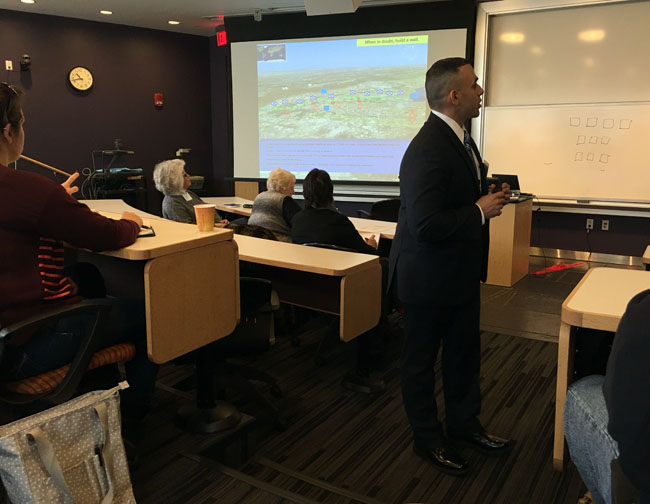This past Saturday, I had the pleasure of joining about three dozen classicists for the Dickinson College Julius Caesar Workshop, featuring Captain Antonio Salinas. Currently a teacher at West Point, Salinas produced a 245-slide presentation mapping Julius Caesar’s Gallic War. This was the same presentation that Dr. Christopher A. Francese stumbled upon while searching for maps to compliment Dickinson’s digital commentaries on The Gallic War. The two had been in contact for years and Francese was able to get Salinas out for the day-long workshop.

Salinas gave attendees a whirlwind tour through the Gallic War via Google Earth Maps overlaid with his own interpretations of locations and troop movements. Focusing on strategy, operational art, and tactics, Salinas introduced many attendees to terminology traditionally familiar only among soldiers and military historians.

With combat experience in Afghanistan, Salinas’s strength was his offhand comments about his own experiences and how Caesar’s own troops might have behaved in situations. He brought raw, personal experience to Caesar’s commentaries.
For example, when emphasizing the use of objects for cover, Salinas attested that “even in modern combat, just having a rock in front of you makes you feel safer.”
While in awe of the Helvetii’s orderly retreat at the Battle of Bibracte (58 BC), Salinas pointed out that “breaking contact is one of the most difficult things to do even in the 21st-century.” Yet, the Helvetii, who were Barbarians according to the Romans, were able to pull off this sophisticated maneuver.
In describing an attack on a Roman legion in occupied territory, Salinas emphasized how “people act differently before an attack and it’s blatantly obvious.” During his own training, Salinas heard the same thing and did not appreciate the notion until he experienced such a situation in Afghanistan. Scenes included women running from a village with all their children. He related to attendees that the Roman soldiers likely noticed similar behaviors outside of Octodurus before an attack.

The beauty of the workshop format at Dickinson was there was plenty of time for questions, discussions, and even debate, some of which we left unsettled.
Salinas’s presentation is available online and worth referencing while reading Caesar’s Gallic War. If you ever have the opportunity to visit one of Dickinson’s many workshops, I highly recommend the experience.
